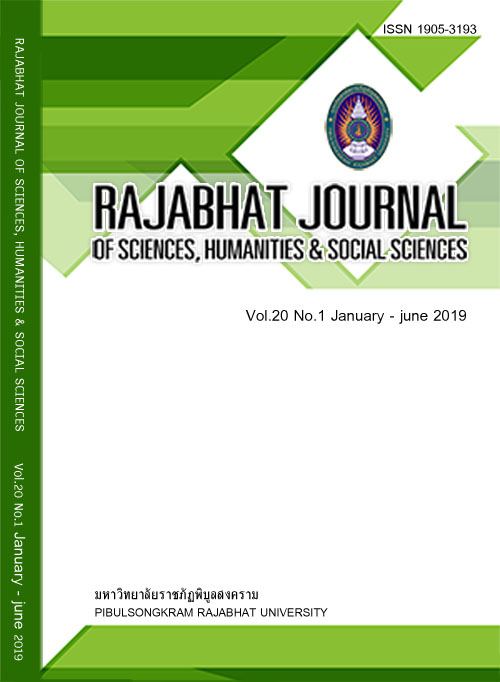METHANE PRODUCTION BY A CO-DIGESTION OF VINASSE WITH MOLASSES AND THE KINETIC STUDIES
Keywords:
biogas, ethanol stillage, sugar production waste, renewable energyAbstract
The objective of this study was to enhance methane production by anaerobic co-digestion of vinasse and molasses in batch fermentation. Kinetic reaction of methane production at optimum conditions was further studied in order to estimate hydraulic retention time (HRT) and organic loading rate (OLR) for continuous fermentation. Results revealed that the co-digestion of vinasse and molasses enhanced methane production efficiency and chemical oxygen demand (COD) removal efficiency in comparison to the mono-digestion of vinasse. The optimum ratio of vinasse to molasses and substrate concentration were 3:2 and 10 g-volatile solid (VS)/L, respectively. The maximum cumulative methane production and methane yield of 3,847 mL/L and 385 mL/g-VS, respectively, were obtained. COD removal efficiency of 91.59% was achieved. The study on kinetic reaction of methane production at the optimum conditions revealed that reaction rate constant (k) obtained from the first order reaction was 0.135 d-1 at the estimated HRT and OLR of 30 d and 0.34 g-VS/L.d, respectively, were obtained.
References
American Public Health Association. Standard Methods for the Examination of Water and Wastewater. 19th ed. Washington D.C.: American Public Health Association; 1995.
Angelidaki I, Ellegaard L. Codigestion of manure and organic wastes in centratlized biogas plants; status and future trends. Applied Biochemistry and Biotechnology. 2003; 109(1-3): 95-106.
Department of Alternative Energy Development and Efficiency. Current Ethanol Production Plant in Thailand, 2017. Available at: https://www.dede.go.th/ewt_dl_link.php?nid=329. Accessed January 8, 2018.
Esposito G, Frunzo L, Giordano A. et al. Anaerobic co-digestion of organic wastes, Reviews in Environmental Science and Biotechnology. 2012; 11: 325-341.
Fang C, Boe K, Angelidaki I. Anaerobic co-digestion of desugared molasses with cow manure; focusing on sodium and potassium inhibition, Bioresource Technology. 2011; 102: 1005-1011.
Fang HHP, Liu H. Effect of pH on hydrogen production from glucose by a mixed culture, Bioresource Technology. 2002; 82: 87-93.
Linke B. Kinetic study of thermophilic anaerobic digestion of solid wastes from potato processing, Biomass and Bioenergy. 2006; 30: 892-896.
Lutz H, Esuoso K, Kutubuddin M. et al. Low temperature conversion of sugar-cane by-products, Biomass and Bioenergy. 1998; 15(2): 155-162.
Mariano AP, Crivelaro SHR, Angelis DF, Bonotto DM. The use of vinasse as an amendment to ex-situ bioremediation of soil and groundwater contaminated with diesel oil, Brazilian Archives of Biology and Technology. 2009; 52(4): 1043-1055.
Moraes BS, Zaiat M, Bonomi A. Anaerobic digestion of vinasse from sugarcane ethanol production in Brazil: Challenges and perspectives. Renewable and Sustainable Energy Reviews. 2015; 44: 888-903.
Naspolini BF, Machado ACO, Cravo Junior WB, Freire DMG, Cammarota MC. Bioconversion of sugarcane vinasse into high-added value products and energy, BioMed Research International. 2017. DOI: https://doi.org/10.1155/2017/8986165.
Owen WF, Stuckey DC, Healy JB. et al. Bioassay for monitoring biochemical methane potential and anaerobic toxicity, Water Research. 1979; 13(6): 485-492.
Parnaudeau V, Condom N, Oliver R. et al. Vinasse organic matter quality and mineralization potential, as influenced by raw material, fermentation and concentration processes, Bioresource Technology, 2008; 99: 1553-1562.
Pattra S, Sangyoka S, Boonmee M. et al. Bio-hydrogen production from the fermentation of sugarcane bagasse hydrolysate by Clostridium butyricum, International Journal of Hydrogen Energy. 2008; 33: 5256-5265.
Vrieze JD, Plovie K, Verstraete W. et al. Co-digestion of molasses or kitchen waste with high-rate activated sludge results in a diverse microbial community with stable methane production. Journal of Environmental Management. 2015; 152: 75-82.
Ward AJ, Hobbs PJ, Holliman PJ. et al. Optimisation of the anaerobic digestion of agricultural resources, Bioresource Technology. 2008; 99: 7928-7940.
Wilkie AC, Riedesel KJ, Owens JM. Stillage characterization and anaerobic treatment of ethanol stillage from conventional and cellulosic feedstocks, Biomass and Bioenergy. 2000; 19: 63-102.
Xia Y, Cai L, Zhang T. et al. Effects of substrate loading and co-substrates on thermophilic anaerobic conversion of microcrystalline cellulose and microbial communities revealed using high-throughput sequencing, International Journal of Hydrogen Energy. 2012; 37: 13652-13659.
Xu R, Zhang K, Liu P. et al. A critical review on the interaction of substrate nutrient balance and microbial community structure and function in anaerobic co-digestion, Bioresource Technology. 2018; 247: 1119-1127.
Zheng XJ, Yu HQ. Inhibitory effects of butyrate on biological hydrogen production with mixed anaerobic cultures, Journal of Environmental Management. 2005; 74: 65-70.
Downloads
Published
How to Cite
Issue
Section
License
Each article is copyrighted © by its author(s) and is published under license from the author(s).










